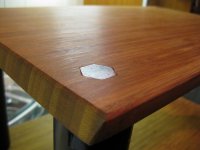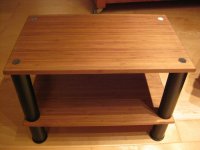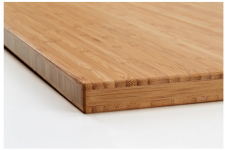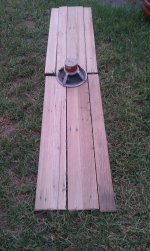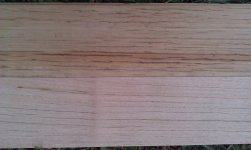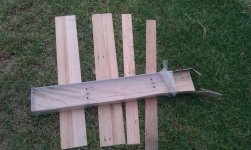Hi All
I am working towards a full range speaker project, bouncing around between different design ideas. I suspect at this stage it will be a Victor or Vulcan as they will be driven by a flea amp. Looking for advice of the pro's and con's of various plus including bamboo, from a suitability in speakers in general and anything tyo watch/do with working with different materials.
Part of the considerations are that I might have the front baffle in a natural wood finish, while the sides might be sprayed.
MDF is not being considered.......
Cheers
Paul
I am working towards a full range speaker project, bouncing around between different design ideas. I suspect at this stage it will be a Victor or Vulcan as they will be driven by a flea amp. Looking for advice of the pro's and con's of various plus including bamboo, from a suitability in speakers in general and anything tyo watch/do with working with different materials.
Part of the considerations are that I might have the front baffle in a natural wood finish, while the sides might be sprayed.
MDF is not being considered.......

Cheers
Paul
There are 3 kinds of bamboo ply available (at least here in NA). Horizontal, vertical, and stranded. They all have the same block core, but with a different construction for the outer plies. The stranded variety (a matrix of bamboo strands) is the best (due to its much higher stiffness).
Bamboo Plywood & Veneer Products | Plyboo
Strand Bamboo Explained | Plyboo
It also has a very hard surface making it mire immune to dings.

dave
Bamboo Plywood & Veneer Products | Plyboo
Strand Bamboo Explained | Plyboo
It also has a very hard surface making it mire immune to dings.

dave
Thanks Dave
My early investigations here are fine, coarse and stranded with carbonised and natural finishes. Haven't seen horiz vs vertical. Are you using similar thickness to BB? Any difference in technique to join?
Cheers
Paul
My early investigations here are fine, coarse and stranded with carbonised and natural finishes. Haven't seen horiz vs vertical. Are you using similar thickness to BB? Any difference in technique to join?
Cheers
Paul
Fine & coutse might be different names for vertical & horizontal. Chris was the one did the actual joinery, but he did say that he had to do things a bit different to take advantage of the edge grain.

Our 1st bamboo build (vertical grain). What looks like marquetry is simply the edge grain of the ply.
This would be natural finish… carbonized is "dyed" darker.
dave

Our 1st bamboo build (vertical grain). What looks like marquetry is simply the edge grain of the ply.
This would be natural finish… carbonized is "dyed" darker.
dave
Thanks Dave. The edge pattern looks nice. Not sure how id make it work with a victor/vulcan, but like the idea of the renewable resource take.
Paul
Paul
Plyco (Victoria, Australia) have these bamboo vartieties on their website. If you can't find a QLD supplier, you could ask them.
When I called a while ago, they also had 5mm thick bamboo in 'slabs' (single layer, not a ply*) which I would like to try as a very thick veneer. It should hold up very well to incidental damage + flaws in my workmanship. There might be a QLD supplier who also has it. It is fairly costly.
If you go with this concept "the front baffle in a natural wood finish, while the sides might be sprayed"
...since most of the ply will be painted over, you could do the cabinet in good-but-basic ply, and laminate a face layer onto the front baffle only.
Recently, I've been laminating timber (breadboard style) over ply, as a super thick veneer. The trick is finding thin boards, to keep the weight managable. Flooring places seem to be the best; I'm using 'overlay' material that's only 9mm thick, which is salvage timber and looks grand, IMO.
Two packs ($140) will cover several metres, but are light enough to carry home from the shop.
*unless I misunderstood. Maybe I should get a sample.
When I called a while ago, they also had 5mm thick bamboo in 'slabs' (single layer, not a ply*) which I would like to try as a very thick veneer. It should hold up very well to incidental damage + flaws in my workmanship. There might be a QLD supplier who also has it. It is fairly costly.
If you go with this concept "the front baffle in a natural wood finish, while the sides might be sprayed"
...since most of the ply will be painted over, you could do the cabinet in good-but-basic ply, and laminate a face layer onto the front baffle only.
Recently, I've been laminating timber (breadboard style) over ply, as a super thick veneer. The trick is finding thin boards, to keep the weight managable. Flooring places seem to be the best; I'm using 'overlay' material that's only 9mm thick, which is salvage timber and looks grand, IMO.
Two packs ($140) will cover several metres, but are light enough to carry home from the shop.
*unless I misunderstood. Maybe I should get a sample.
Thanks Hollowboy - I'll add lamination to the list of potentials. Breadboard style means running in parallel glued together? Photo would be great if not too much trouble.
Thank you for picking up on the fact I am considering painting - "basic" ply - structural vs marine?
Re: bamboo, I have seen that it is available up to 40mm thick but shudder to think what the cost might be......
Cheers
Paul
Thank you for picking up on the fact I am considering painting - "basic" ply - structural vs marine?
Re: bamboo, I have seen that it is available up to 40mm thick but shudder to think what the cost might be......
Cheers
Paul
Don't laugh, but what about this as a raw material ALDERN Countertop Bamboo 102x49 cm - IKEA i've been thinking about build small full range speakers for a while and every time i see sheet bamboo i start wondering...
Not laughing as that might be a cheaper way of getting the laminate hollowboy suggested... I have a love hate relationship with IKEA, (also with Quentin Tarantino, popstars with good voices, white bread), this is one of those moments.....
If you're interested in seeing some completed speakers, to check out the aesthetics, take a look at blumensteinaudio.com
If you're interested in seeing some completed speakers, to check out the aesthetics, take a look at blumensteinaudio.com
Cheers
ALDERN Countertop Bamboo 102x49 cm - IKEA
This ply has a strip core instead of the blocks we see, but the outer plies are horizontal, something i would tend to avoid. Price is equivalent to about 416 euro for a 4x8 (1220x2440) sheet. That compares to about $300 USD for a sheet of ply here.
dave
Same thing in the US is equivalent to about $595 USD/sheet
Attachments
Thanks Hollowboy - I'll add lamination to the list of potentials. Breadboard style means running in parallel glued together? Photo would be great if not too much trouble.
There's a couple of pix here. This is a 19mm hardwood 'veneer' (with more at the corners to allow a bigger roundover) over a core of various materials. This is just illustrative - it would be too heavy for a Vulcan sized enclosure.
http://www.diyaudio.com/forums/full-range/283083-horn-fast-timber.html
Thank you for picking up on the fact I am considering painting - "basic" ply - structural vs marine?
Marine is nice to work with. It feels really stiff. The cut edges look nice and crisp, and it seems strong, not flaky, when you pre-drill screw holes. I'd feel confident about using it in fairly thin panels.
But any ply that looks well made is probably good.
Re: bamboo, I have seen that it is available up to 40mm thick but shudder to think what the cost might be......
Cheers
Paul
I'd be just as worried about the weight. There's so much cross bracing in the Victor and Vulcan that I'd imagine you could use much thinner material.
I'd be just as worried about the weight. There's so much cross bracing in the Victor and Vulcan that I'd imagine you could use much thinner material.
In the Victor & the Vulcan i'd suggest an extra brace between the baffle & the 1st partition. We added this after the fact in Bernie's Victors. With this brace in place you could probably get away with 15mm quality plywood… we can't get 15mm bamboo ply (only 12 & 18 (and bigger)). You might be able to get away with 12mm stranded, with 18mm baffle. I'd be tempted to use 18mm bamboo for the baffle, 12mm for the sides & back partition and 15mm quality ply for the insides.
dave
This is the 9mm 'rustic' overlay flooring, with a 10" driver for scale. It is light and quite nice to work with.
Most pieces have some nail marks, and a few have other defects, so it is only viable if you're happy with these features (or you could run the grain horizontally, thus using short enough pieces to avoid the flaws).
This pic with the driver shows the colour matching possible with slightly less than a complete pack (expect to pay $50-$70 per pack).
The boards are ~15cm longer than you need, giving a little bit of leeway for trimming pieces you don't like, and aesthetic tweaks like staggering the remaining flaws in a way that looks nice.
Most pieces have some nail marks, and a few have other defects, so it is only viable if you're happy with these features (or you could run the grain horizontally, thus using short enough pieces to avoid the flaws).
This pic with the driver shows the colour matching possible with slightly less than a complete pack (expect to pay $50-$70 per pack).
The boards are ~15cm longer than you need, giving a little bit of leeway for trimming pieces you don't like, and aesthetic tweaks like staggering the remaining flaws in a way that looks nice.
Attachments
It seems cheaper here. Thanks for the additional advice re thicknesses and bracingThis ply has a strip core instead of the blocks we see, but the outer plies are horizontal, something i would tend to avoid. Price is equivalent to about 416 euro for a 4x8 (1220x2440) sheet. That compares to about $300 USD for a sheet of ply here.
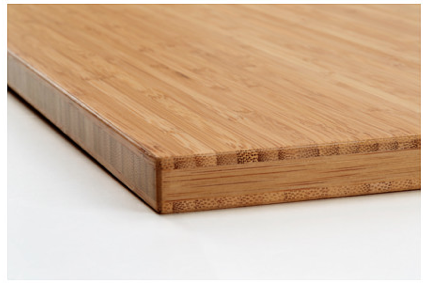
dave
Same thing in the US is equivalent to about $595 USD/sheet
There's a couple of pix here. This is a 19mm hardwood 'veneer' (with more at the corners to allow a bigger roundover) over a core of various materials. This is just illustrative - it would be too heavy for a Vulcan sized enclosure.
http://www.diyaudio.com/forums/full-range/283083-horn-fast-timber.html
Sweet that looks really good. Nice work
Marine is nice to work with. It feels really stiff. The cut edges look nice and crisp, and it seems strong, not flaky, when you pre-drill screw holes. I'd feel confident about using it in fairly thin panels.
Ping!
But any ply that looks well made is probably good.
I'd be just as worried about the weight. There's so much cross bracing in the Victor and Vulcan that I'd imagine you could use much thinner material.
What wood is that? My other thought was to have the baffle in Tassie oak.. Thanks for the pics.
The 19mm stuff looks like Tasmanian Oak, but I think a lot of pale native timber gets lumped together as "Tassie Oak" or "Victorian Ash". Many timber yards don't specify species at all, they just call it 'kiln dried hardwood', so I find it a difficult topic to educate myself on.
The 9mm stiff is a mix. Most of the pale, fine-grained stuff looks like it came from tall, mature trees, so I would guess Victorian Ash. The rest: not sure.
- Status
- Not open for further replies.
- Home
- Loudspeakers
- Full Range
- Experience with bamboo ply
